Sosnovsky's hogweed is a honeyeater from the plant world. He doesn't care about anything. It cannot be killed by standard weeding; it is not afraid of even the most toxic pesticides, and its sap, in case of extensive lesions, can even kill. 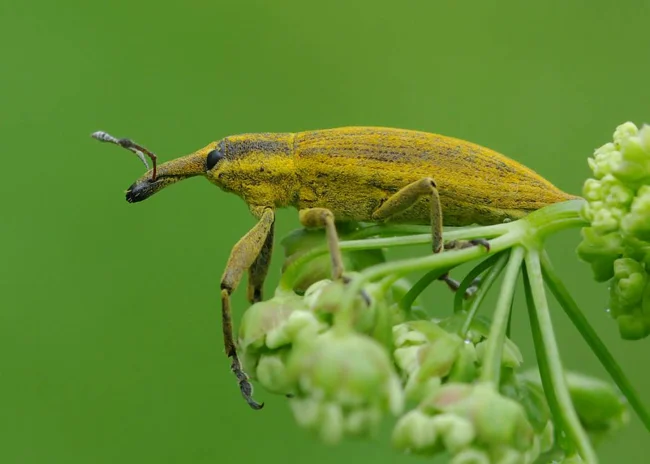
The hero we don't deserve, but need so much.
And by 2040, scientists predict that there will be no place left where this ominous weed will not take root. 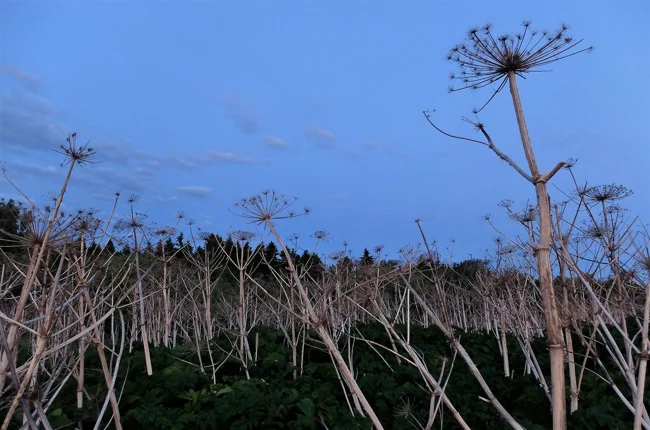
Yes, plants can't walk. But no one can stop the march of hogweed!
An assistant to fighters against the hogweed yoke is also widespread almost everywhere: the common tailcoat lives on a vast territory from Spain to Lake Baikal. But finding it is not easy, because this baby is less than 2 centimeters in length, which also loves to hide on the underside of leaves. And it’s even more difficult to identify, because the little hero is part of the weevil family. 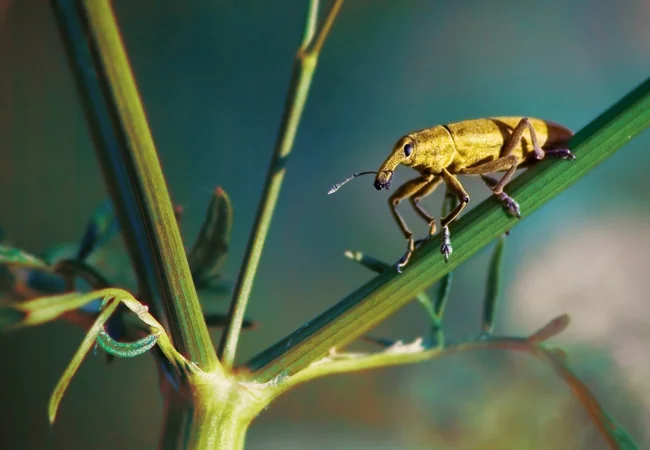
Remember me well, I'm your bro!
The tailor has been haunted by hogweed throughout his life, but does it in different ways. Adult insects actively devour leaves, but, frankly, there is little benefit from this. An adult insect needs too little food and its life in this world is too short. Most of them do not live even two months. 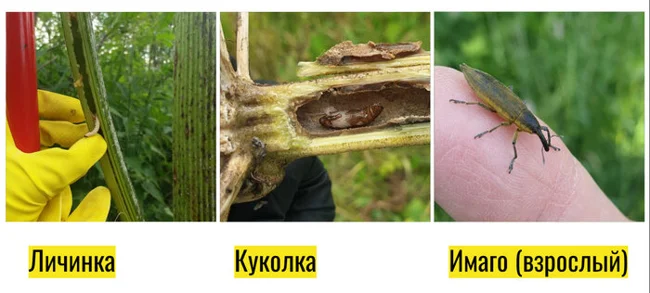
3 main stages of tailcoat development. And any other bug!
But tailcoats breed early, already at the end of May or in the first half of June. Moreover, the process itself looks both trivial and strange. When a male finds a female, he mounts her and begins breeding in the most basic form, without any fancy tricks. The funny thing is that the larger female seems to have no idea what is being done to her. She continues to feed, hide from predators and crawl on leaves! 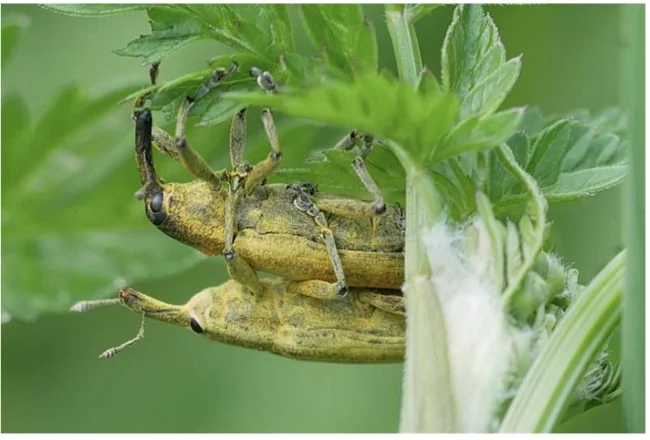
Something has been bothering my back lately, probably the weather is changing.
At the end of mating, the male goes about his business, and a difficult task awaits the expectant mother. Using the rostrum, that same “long nose,” she needs to drill a hole in the dense stem of the plant. Just drill it. The dressmaker turns his head with effort, cutting off the plant tissue with small mandibles, layer by layer. To make one hole, the female takes 5-7 minutes of intense work. She then lays a few eggs inside and moves on to the next plant. In a couple of days she will have to perform this operation at least two dozen times. 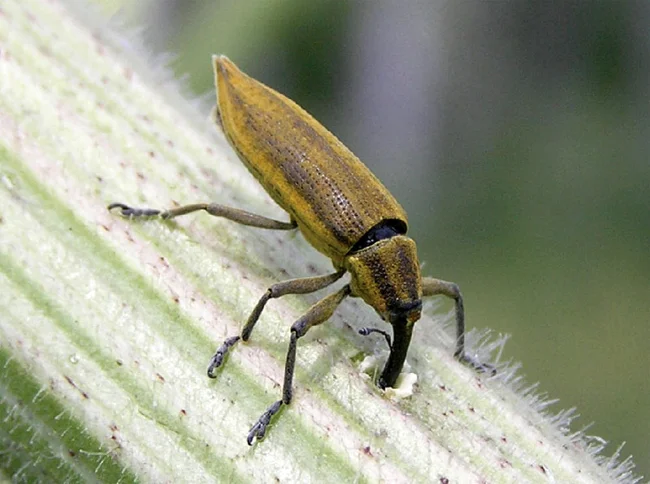
The mobile drilling rig is deployed and ready for work.
Tailbirds are extremely scrupulous when it comes to laying eggs. Not all hogweeds are suitable for them, but only those that are preparing to bloom this year. They lay eggs at the base of the flower stalk, and the larvae receive a whole bunch of nutrients that should have been used to form seeds. 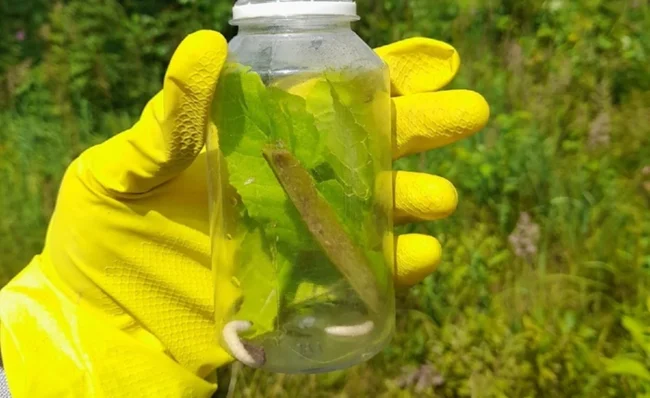
There are 2 ways to understand that this is a tailcoat larva. The first is to bury yourself in insect species identification guides for long hours. The second is to find it in the hogweed.
This is their main benefit as hogweed exterminators. If a plant simply damages its stem, it will go into standby mode and recover. Moreover, hogweed can do this up to 7 times in a row. But it blooms only once in its life, after which it dies. And the tailworms, intercepting nutrients, deprive it of the opportunity to form seeds. As a result, the hogweed dries out without bringing any benefit to the population. 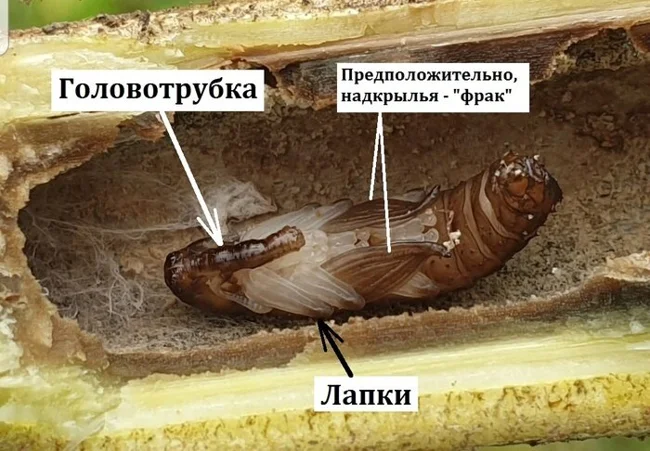
When the budworm enters the pupal stage, it can no longer harm the plant. Only now it is no longer capable of growing seeds.
From the above we can conclude that tailcoats are an ideal weapon against hogweed. So why aren't these insects grown on an industrial scale? Unfortunately, it's not that simple. Tailbirds feed not only on hogweed, but also on quite innocent forest plants, as well as carrots and dill. If you throw several thousand of these insects onto an overgrown field, they will first eat the harmful plant and then ruin the harvest of all summer residents in the area. This means that then we will have to find, raise and release the frak-eaters into the wild.
0 comments
